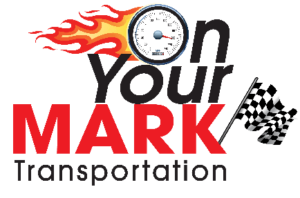Are you facing a human Resource (HR) issue, or perhaps driver recruiting problems? Why not have the support of an HR team experienced in the passenger transportation industry to assist you? From preparing a custom personnel handbook to interpreting confusing DOT or DOD issues, you need someone who understands the industry to help you come to a positive solution. We have that team ready to assist you with one phone call.
EMPLOYEE RETENTION AND RECRUITING PROGRAMS
Is your organization having issues with hiring or retraining drivers? The professionals at On Your Mark Transportation can come in, review your systems, and make recommendations on Driver Retention Programs customized for your organization. Looking to expand on your driver or staff recruiting? Our associates can do all types of recruiting, from drivers all the way through CEO positions. We have the right people with experience in the Luxury Transportation, Bus and Motorcoach Industry to fill those open positions. We can do everything from online postings to phone interviews, finding the right candidates to bring to you for final interviews and hiring. In fact, we can create customized videos, like the one below, for your organization for posting on your social media.
EMPLOYEE HANDBOOKS
More and more DOT Auditors are requesting to look at Company Employee Handbooks or specific policies. Companies are expected to show they have policies in place, in particular for Drug and Alcohol Testing, as well as other required Federal Policies for Businesses. Most companies don’t have the experience or staff to write a Company Specific Policy Manual. However, with the experience of years in the Industry, On Your Mark Transportation has created a complete Employee Handbook with policies for all employees, including office, driver and maintenance personnel. When your State Department of Safety arrives to do a workers compensation review, and wants to see your Lock-out Policy, you can turn to your handbook and open that page. When an attorney for the plaintiff wants to see your policy on drivers meeting the passenger at the bottom of the step, you can show that you have a policy that covers that as part of your training program. In fact, we have an example of our policy manual here.
Retention before recruitment: Why drivers leave.
In my travels, I always ask for a tour of the facilities as part of my learning about the company.
To me, the most important stop is the drivers room, where drivers can come in, have a cup of coffee, fill out paperwork, perhaps have a snack, or prepare for an upcoming trip. I’m often disappointed in what I see.
 Many companies don’t have a drivers room. If there is one, I look at the walls. I almost certainly see what I call the “wall of shame” – that one wall (or more) that has all the “Don’t do this …” or “You can’t park here,” or “If we get one more call about …”
Many companies don’t have a drivers room. If there is one, I look at the walls. I almost certainly see what I call the “wall of shame” – that one wall (or more) that has all the “Don’t do this …” or “You can’t park here,” or “If we get one more call about …”
Sometimes there are so many “don’t do” memos that they cover up other “don’t do” memos that are years old. Yet, nowhere in that room are there any “thank you” or “good job” mentions. It’s all negative.
Once, I went into a drivers room and saw a number of boxes from Amazon on the tables, which reduced seating and table space. It yelled to me, “Drivers, you are not important to us!”
When I asked the owner why all those boxes were on the drivers tables, he said they had been delivered the day before and nobody had a chance to put the items away. So I asked why they were sitting at the drivers tables, and not on the desk of the accounting officer?
He looked at me like I had asked a strange question. In truth, I was asking if the drivers are less important than accounting. Are they less important than the safety department?
You wouldn’t just have an Amazon shipment dropped on any of those desks, so why do so on the driver’s desk?
Respect builds retention
When we are asked about recruiting drivers, I ask the company why they need them. I am often told that drivers will leave for 50 cents more an hour for someone down the street.
However, when my associates and I interview driver applicants and ask why they were leaving their previous company, wages are at least third on the list, or further down. The top reasons are a “feeling of not being appreciated” or “Not having a say in anything/nobody listens” or a “sense of fairness between all drivers.”
Does your company have a “driver council” where its representatives can talk with management about issues drivers face? When management sits down with drivers, is there a real sense of listening and not just defensive pushback on everything the drivers point out? Defense is great in football, but it does not work in good management.
When a driver points out a problem, is it handled in a timely manner, or just put on the “I’ll get to it when I have time” pile?
My associates and I review a lot of social media postings for companies. We see a lot of pictures of pretty buses parked in front of beautiful sunsets or a mountain background, but how often are there posts on your social media thanking a driver for the great letter a customer had written about them, or for completing their first, fifth or tenth year with your organization?
How many pictures of your real drivers do you have on your website, or do you have that same stock photo of a driver that everyone uses?
Driver recruitment starts first with driver retention. If you have drivers leaving as fast as you are hiring new ones, the problem is most likely not because of 50 cents more an hour. Take a deep look within. Be the place where drivers want to stay, and you won’t need to recruit as much.
Mark Szyperski owns On Your Mark Transportation, a company that provides transportation consulting, marketing expertise, motorcoach training, and bus website development, among other services.
Request A Quote:

